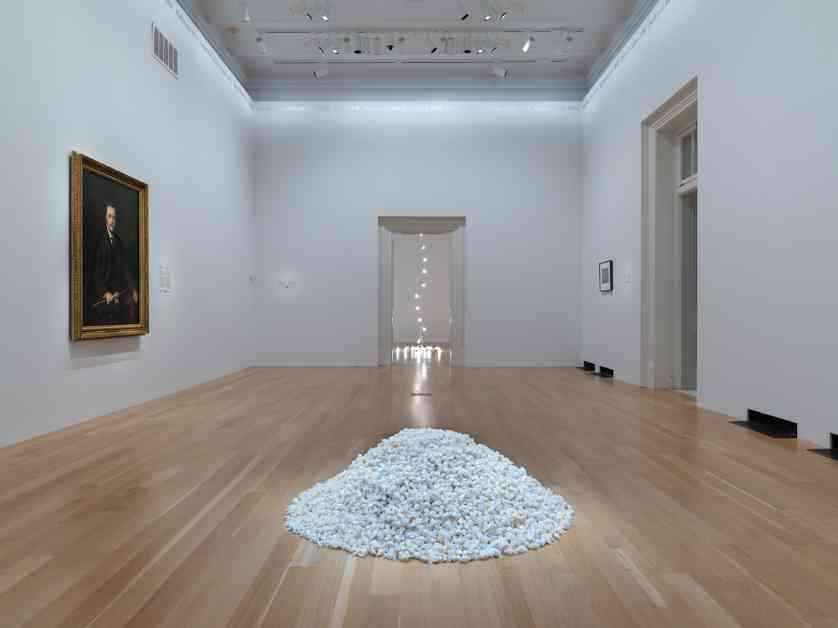The controversy surrounding the Felix Gonzalez-Torres Foundation’s involvement in the Smithsonian exhibition has sparked heated debate over the presentation of one of the artist’s most iconic works. At the center of the storm is the piece titled “Untitled” (Portrait of Ross in L.A.), created in 1991, which has been accused of omitting any reference to the artist’s partner, Ross Laycock, who succumbed to AIDS-related causes.
Scholar Ignacio Darnaude ignited the flames by publishing an op-ed in Out, accusing the National Portrait Gallery of perpetuating “queer erasure” due to the absence of Laycock’s name in the wall text accompanying the artwork. In response, the Felix Gonzalez-Torres Foundation vehemently denied the allegations, emphasizing the exhibition’s inclusive nature and the extensive research conducted by curators Josh Franco and Charlotte Ickes to ensure proper representation of LGBTQ+ content.
The foundation clarified that the intention behind “Untitled” (Portrait of Ross in L.A.) was to encourage engagement and dialogue, refuting claims of erasure and misinformation. The exhibition seeks to honor Gonzalez-Torres’s queer identity, his relationship with Laycock, and their tragic deaths from AIDS-related complications. This poignant portrayal resonates profoundly in today’s socio-political climate, especially amid challenges to diversity efforts across the federal government.
The ambiguous title of the artwork, referencing Ross Laycock, belies its unconventional nature as a stack of candies available for viewers to consume and replenish, symbolizing an endless cycle of loss and renewal. The significance of the piece’s “ideal weight” of 175 pounds has sparked various interpretations, linking it to Laycock’s weight, the average adult male weight, or even Gonzalez-Torres’s own weight. The complexities of the artist’s intentions highlight the multifaceted nature of his work and the challenges of definitive interpretation.
Despite the controversy, the National Portrait Gallery defended its decision not to alter the artwork’s presentation, citing the curators’ focus on showcasing Gonzalez-Torres’s revolutionary portraiture. The museum’s efforts to contextualize the artist’s practice by juxtaposing his works with portraits of queer figures aim to enrich viewers’ understanding of his legacy. A wall label in the gallery housing “Untitled” (Portrait of Ross in L.A.) acknowledges Laycock’s role in Gonzalez-Torres’s life, bridging personal and artistic narratives.
Critics have raised valid concerns about the exhibition’s treatment of Laycock’s memory, arguing that the omission of his name perpetuates a commercialized narrative that dilutes the artwork’s poignant AIDS memorial significance. Social media platforms have amplified these voices, with artist Carl George and others decrying the erasure of Laycock’s identity and the broader implications for LGBTQ+ representation in the art world. The controversy has reignited discussions on the responsibility of art institutions to preserve the integrity of an artist’s vision.
As the debate rages on, it underscores the enduring power of art to provoke thought, challenge norms, and confront societal injustices. The legacy of Felix Gonzalez-Torres and his poignant tribute to Ross Laycock serve as a poignant reminder of the intersection between personal loss, public memory, and artistic expression. In a world grappling with ongoing struggles for equality and recognition, the exhibition at the National Portrait Gallery stands as a testament to the enduring relevance of Gonzalez-Torres’s work and the imperative of preserving LGBTQ+ histories in the cultural landscape.












